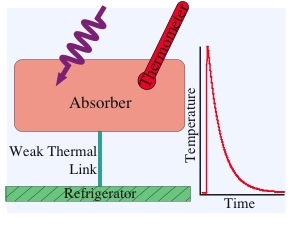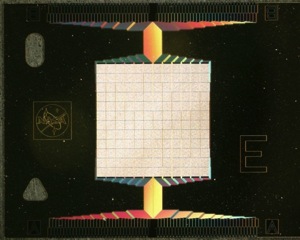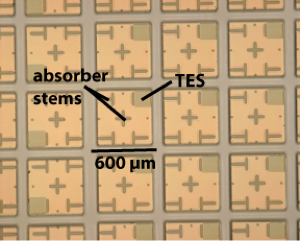The Science of TES's

The idea behind a microcalorimeter is deceptively simple: it takes advantage of the unique properties of a superconductor to make an ultra-sensitive thermometer. A superconductor transitions from the normal state (with finite resistance) to the superconducting state (with zero resistance) over a small span of about 1 mK, which makes for a sharp 'edge'. A Transition-Edge Sensor (TES), as the name suggests, is a superconducting film held in this transition. Since the edge is sharp, a tiny change in temperature that this TES sees - such as a photon being absorbed - translates to a big change in resistance, from which the energy of the original photon can be extracted.
The execution of the idea, however, requires some electronic and cryogenic ingenuity. An absorber, which provides more material to stop the energetic photons, is cooled along with the TES to the transition temperature of the TES, typically around 100 mK. (Low-temperature superconductors are used because the intrinsic thermodynamic fluctuations are lower in the absorber at such temperatures.) When a photon is absorbed, its energy is converted into thermal energy which heats up the absorber by a small amount (typically less than 1 mK). The system cools down again quickly through negative electrothermal feedback and its connection to the refrigerator. An array of SQUID electronics monitors the changing current at constant voltage through the TES as the absorber temperature changes. The integral of this current pulse is proportional to the energy of the photon, and the time of arrival is determined from the rise of the pulse. For more info on microcalorimeters, follow this link.
The Micro-X focal plane will consist of a 12x12 square array of these absorber-TES pairs. Such fine-tuned thermometry will allow for precision spectroscopy of astrophysical sources.
The Micro-X focal plane array, 7.2 mm across


An image of the array from beneath, showing the absorber supports and the location of the TES
